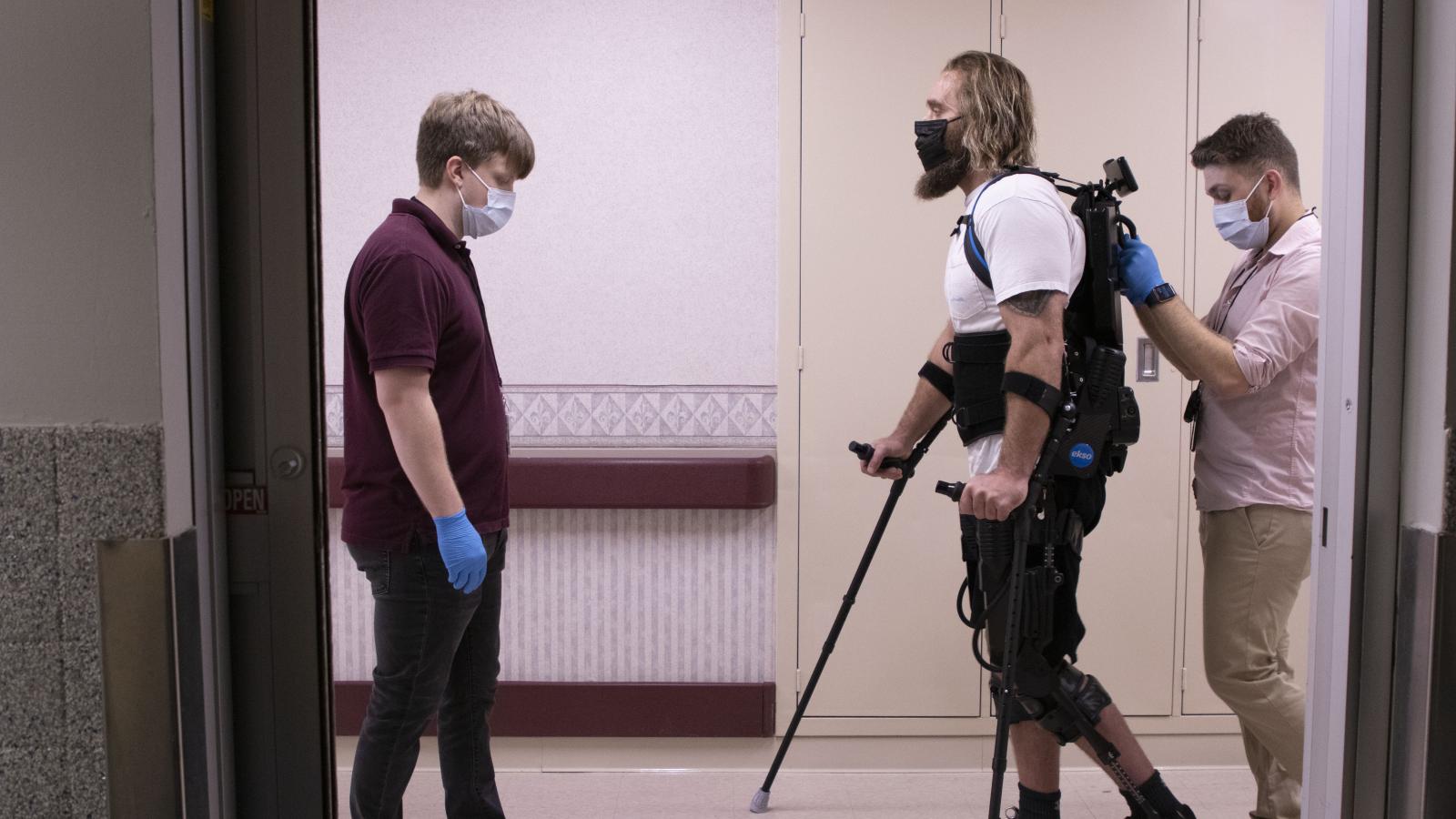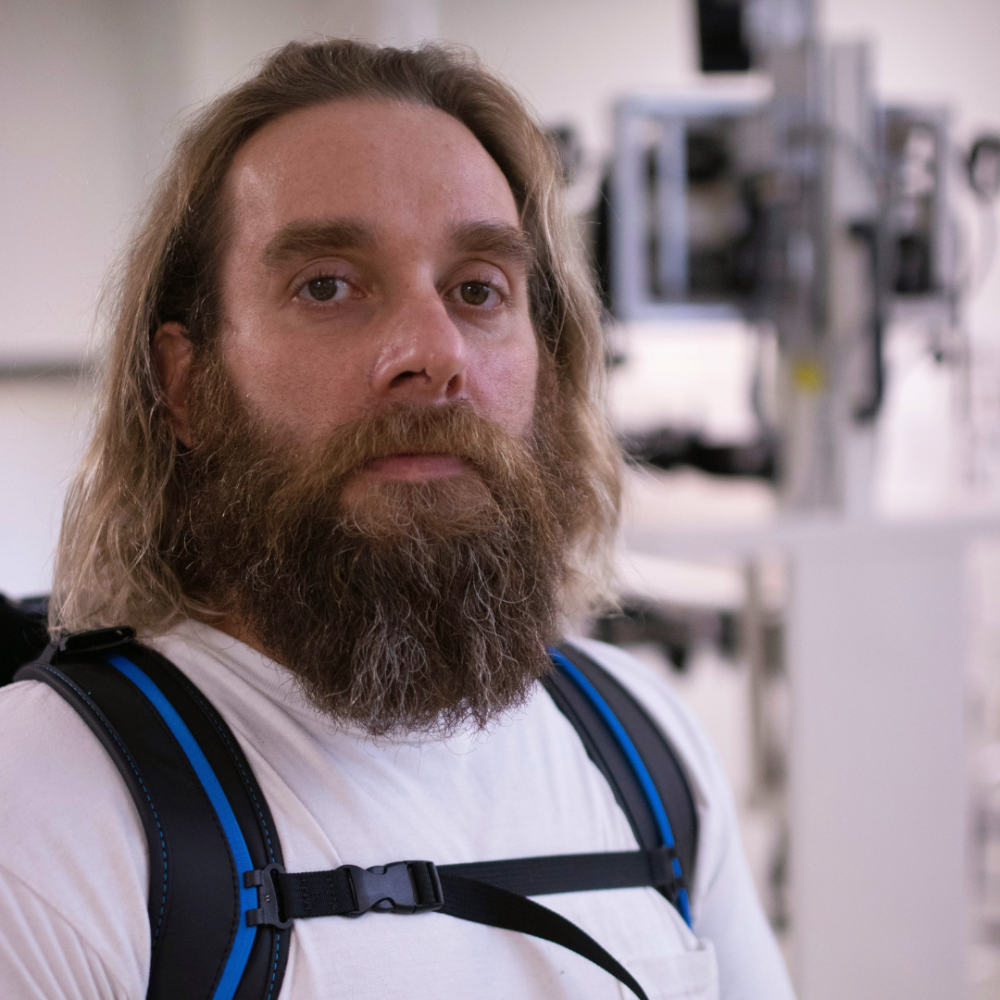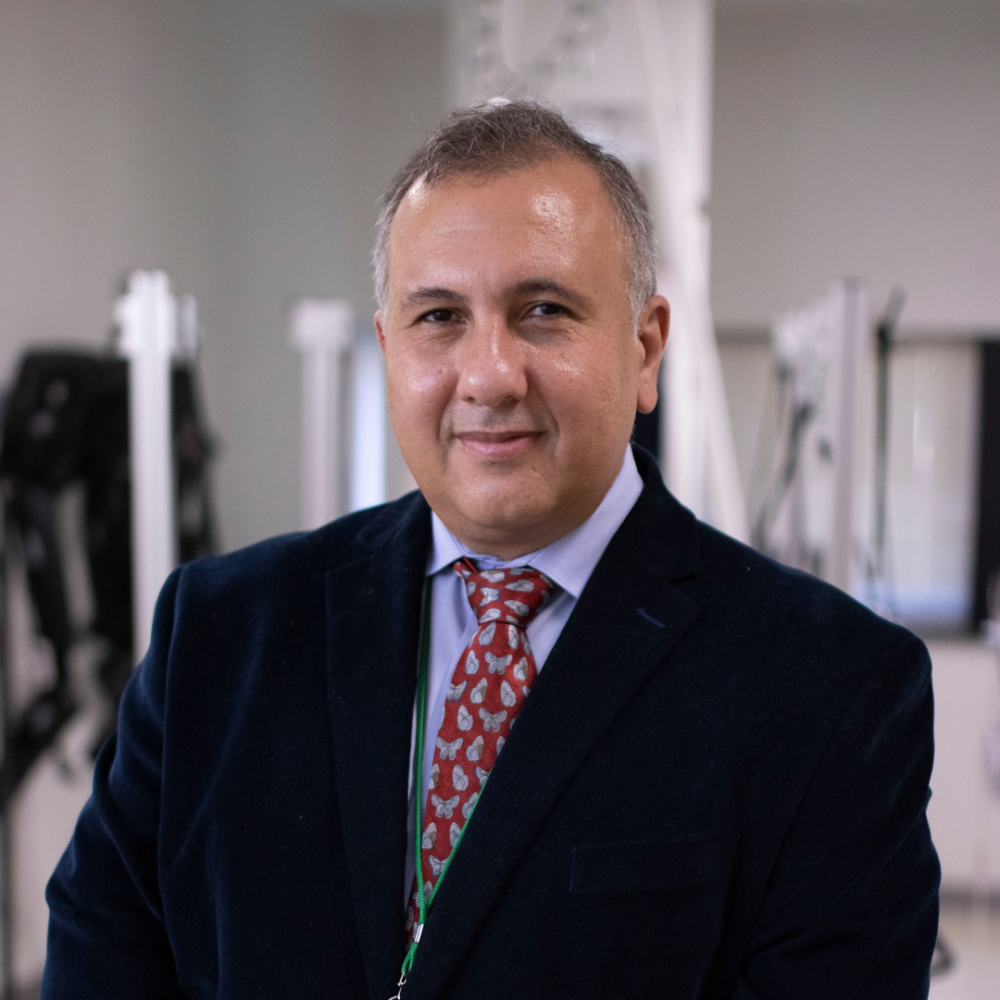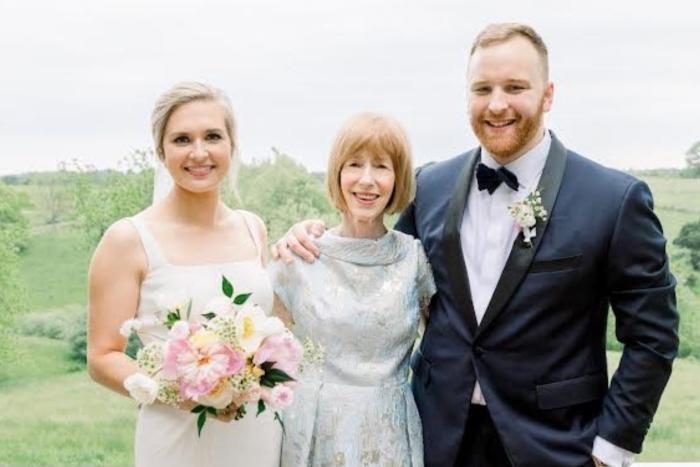
Brandon Kasnick was paralyzed in 2013 after a combat-related seizure led to a fall. He is now participating in a clinical trial to improve his mobility and health. Photo: Tyler Trumbo, MCV Foundation
Patient Perspective: Brandon Kasnick
When a person who has been paralyzed stands or walks again, whether on their own or with assistance, the moment can create or fortify freedom, control, hope and a new future.
To witness these moments is one thing.
“You cannot describe that emotion of the patient and family when, after 15, 20 years of sitting in a wheelchair, someone is standing for the first time,” said Ashraf Gorgey, Ph.D., director of spinal cord research at the Central Virginia VA Health Care System and professor in the Department of Physical Medicine and Rehabilitation at the VCU School of Medicine. “Tears and smiling. Very contrasting emotion happening at the same time.”

To live these moments is another thing.
“It’s hard to say,” said Brandon Kasnick, who in 2013 was paralyzed after a combat-related seizure led to a fall. “My lower body hasn’t worked in eight years. Now I’m standing. I try to stay calm and take it one day at a time. I appreciate it, and I’m just trying to stay present in the moment.”
Dr. Gorgey has been creating these moments for individuals and families for 17 years. Kasnick is enrolled in one of Dr. Gorgey’s current projects that is supported by a 2020 Department of Defense-funded $3.7 million grant. The project — Epidural Stimulation and Resistance Training for Overground Locomotion after Spinal Cord Injury — is determining whether spinal cord stimulation will help patients who are paralyzed to stand and produce step-like movement with the support of an exoskeleton device.
It is the first study anywhere to apply a new CVHCS-developed epidural stimulation process in restoring muscle control for patients with spinal cord injuries.
Dr. Gorgey has long worked with exoskeletons — robotic suits that help people with spinal cord injuries walk — but the epidural stimulation that he is using today is novel.
The two components of the study play very different, yet vital, roles. The epidural stimulation method involves a device that is implanted under the skin with wires that are placed in the spinal canal to send electrical impulses to the spinal cord. The stimulation mimics brain signals that normally would be sent to the spinal cord to initiate the process of standing and walking.
After these signals are in place, there still lies the challenge of muscle atrophy. “People who are in wheelchairs are in what we call a gravity-dependent position,” Dr. Gorgey said. “Much like astronauts, their muscles weaken, and they have to learn to use them again. But unlike astronauts who are in space for 100 days or so, people who are paralyzed are in this position for years.”
My lower body is learning how to work again. It’s a process.
Brandon Kasnick

The exoskeleton addresses these muscle issues by providing overground step-like movement that builds muscle, restores muscle memory and allows the spinal cord circuitries to restore. The process requires enormous and extensive training and may reach three to five times weekly for up to four hours per day.
“My lower body is learning how to work again,” Kasnick said. “It’s a process. It’s like a baby who doesn’t have control of his limbs, and one day they learn to crawl, then they learn to walk.”
As time passes and muscles strengthen, the exoskeleton can be set to provide as much or as little assistance as needed. Kasnick, for example, began his participation in the research in December 2020 needing 100% assistance from the exoskeleton. By October, he only needed 55% assistance from the device.
The initial observations of improved ability to walk with assistance have been impressive, but the project is about more than helping people walk again. This therapy could ultimately lead to a standard treatment for spinal cord injury that increases cardiovascular health and bladder and bowel function.
Cardiovascular disease and Type 2 diabetes are the leading killers of people who are paralyzed, so even if people who receive this therapy cannot walk independently after treatment, any level of improved mobility could add years to their lives.
“These patients experience muscle atrophy, bone loss, bedsores, obesity, kidney problems and much more,” Dr. Gorgey said. “There are a lot of challenges that you just don’t think about that impact their quality of life.”
Thanks to the unique partnership among top-flight institutions in Central Virginia, the infrastructure now exists for those challenges and many more to be addressed, researched and reduced in people who are working hard to regain functions of everyday life — in the region and across the country.


